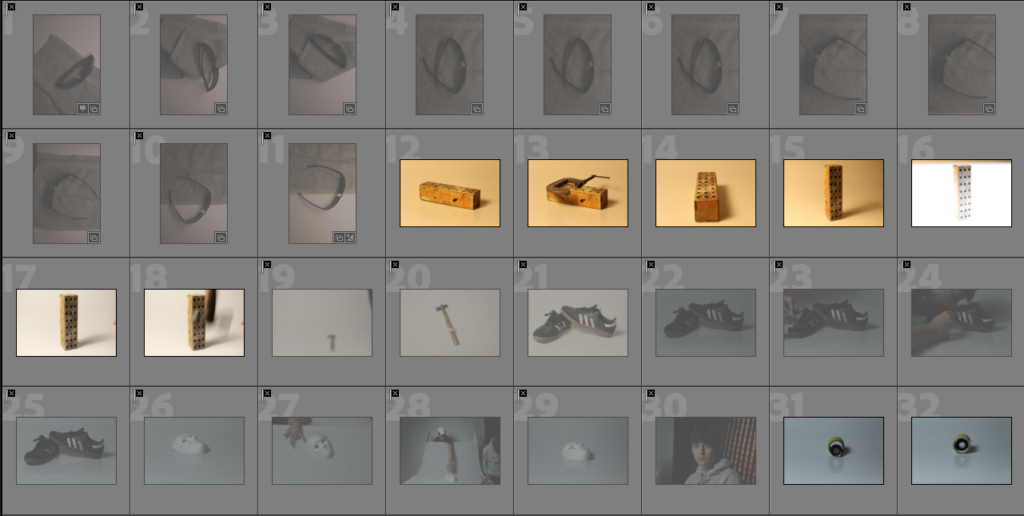
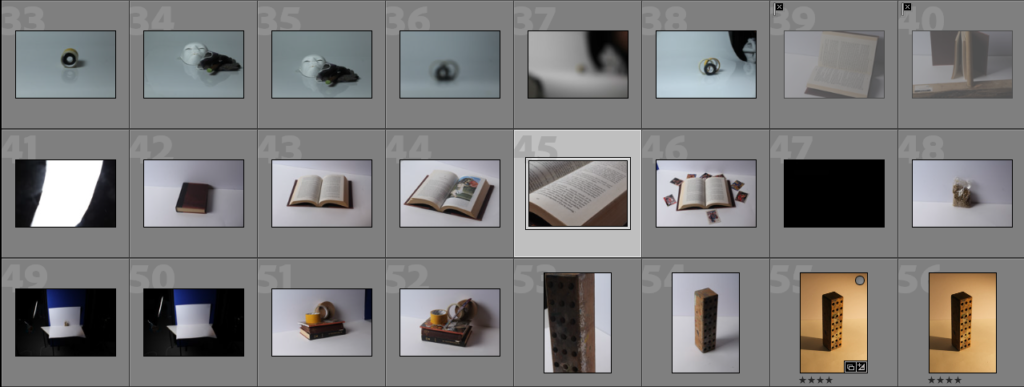
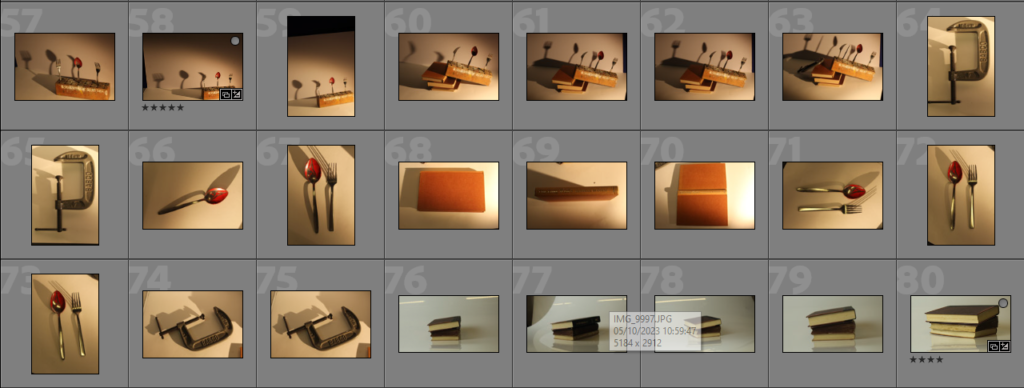
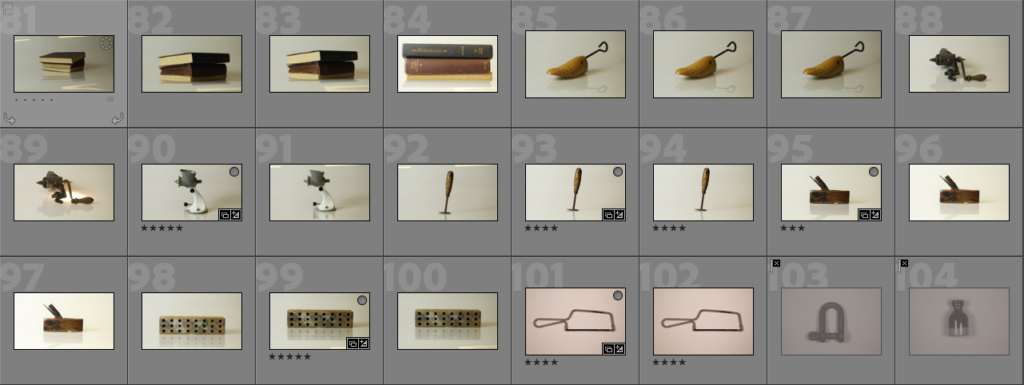

This is all of the photos that I have taken so far in my study of still life. I have utilised the techniques that Still Life photographers and painters used, such as using objects like books to symbolise knowledge and wealth. The majority of the photos are singular objects where I have experimented with lighting and the positioning of the object in the frame. I used a variety of lighting to give different tones and tints to the photo and to add warmth or coldness to the picture. I also used a variety of backgrounds, such as an infinity curve and a flat background. Throughout all of the photoshoots, I kept the depth of field wide on all of the photos as I found through my study of Still Life that having every object in focus is a key element to Still Life photography. Some of these photos are a bit experimental, adding different and contrasting objects that usually would not be seen together, such as the wooden block and the painted cutlery.
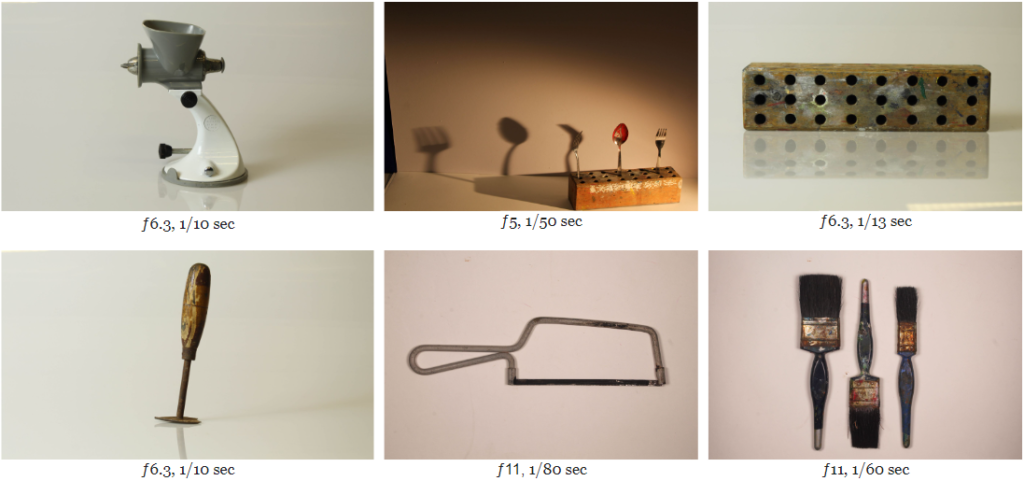
Here are what I believe to be the best photos. Most of these are singular objects, with some experimental photos in there as well. There are a couple Walker Evans inspired photos in the bottom right. I have used lots of different backgrounds such as an infinity curve or just a flat white background. Not much editing was done to these photos, only slight changes to bring up the exposure of the image. I did this because the lack of colour in a photo generally gives it a very solid, still feeling.

This photo depicts what appears to be some kind of kitchen appliance like a meat grinder. It was taken using an infinity curve, which works well in this case as it looks as if there is no background at all. The photo lacks colour, which emphasises the aspects of still life as colour generally tends to bring a sense of movement, like something is going on in the photo, whereas here it is a still object. This photo was taken with a slow shutter as well, which further implies the stillness of the photo as a slow shutter means that the object cannot move. Older still life paintings used to depict flowers, books or skulls as metaphors for happiness, knowledge or death, but nothing significant derives from the kitchen appliance in this photo, which coupled with the drab colour scheme, puts further emphases on the stillness of the object.
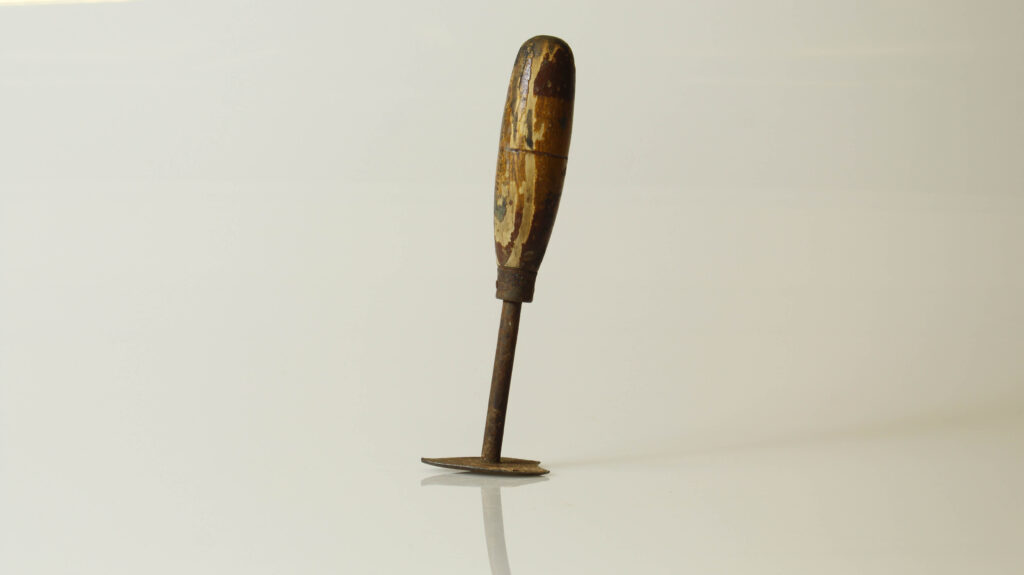
In this photo, there is an object that appears to be some kind of flat tool which was used a very long time ago. This adds mystery to the photo immediately as it gives uncertainty to what the object actually is, where it has come from, what it does. This lack of context is prevalent in most still life photographs as still life is not about the context of the photo, but the content. Also, the object has a slight tilt, which adds another layer of uncertainty because it looks as if it will fall, but it doesn’t and remains still. The shutter on this photo was also slow, which applies further emphasis on the stillness of the object. The tool is rusted everywhere there is metal, which adds texture to the photo and also aids the photo in keeping a brown colour scheme. Although there is more colour in this photo compared to the previous one, the colours are still dull, which again depletes the photo of movement.
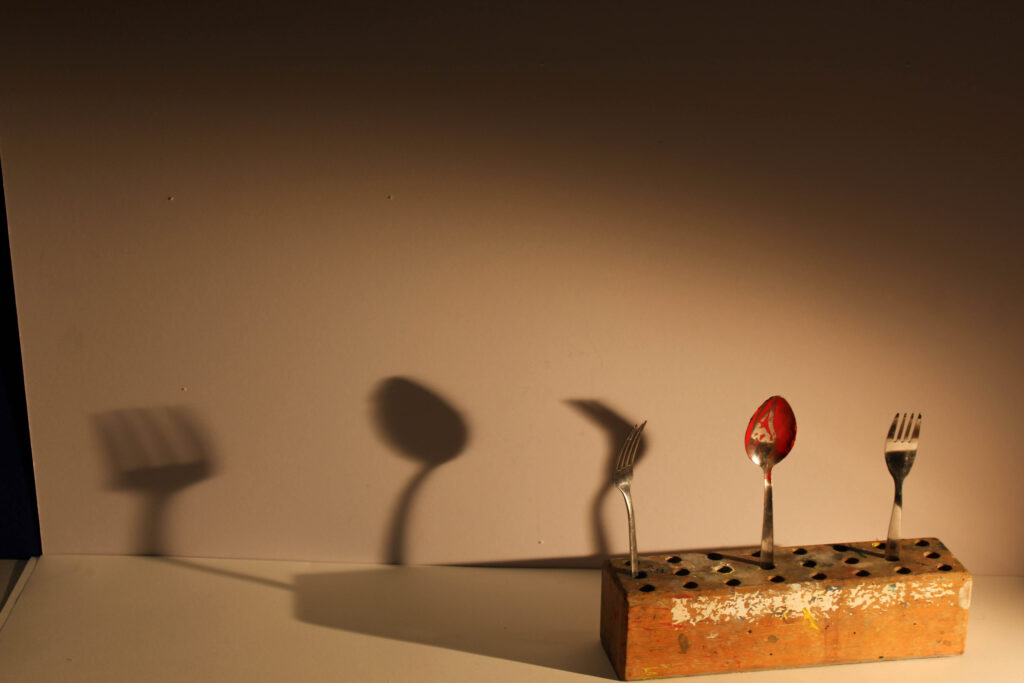
This photo was one of the more experimental ones out of all of the photoshoots, and it is the odd one out of all the selected photos because it features warm lighting, a few colours and has a shadow. I also wanted to include this photo because I felt that I needed to show how shadows can be used in still life. In this example, the shadow is used to stretch the object across the photo so that the frame doesn’t appear empty. The texture that appears on the wooden block also adds to the photo as it adds roughness to the otherwise smooth background. The painted cutlery also adds an interesting element as it removes the smoothness that would be on the spoon and replaces it with a gritty, unclean texture that, again, adds roughness to the smooth background.
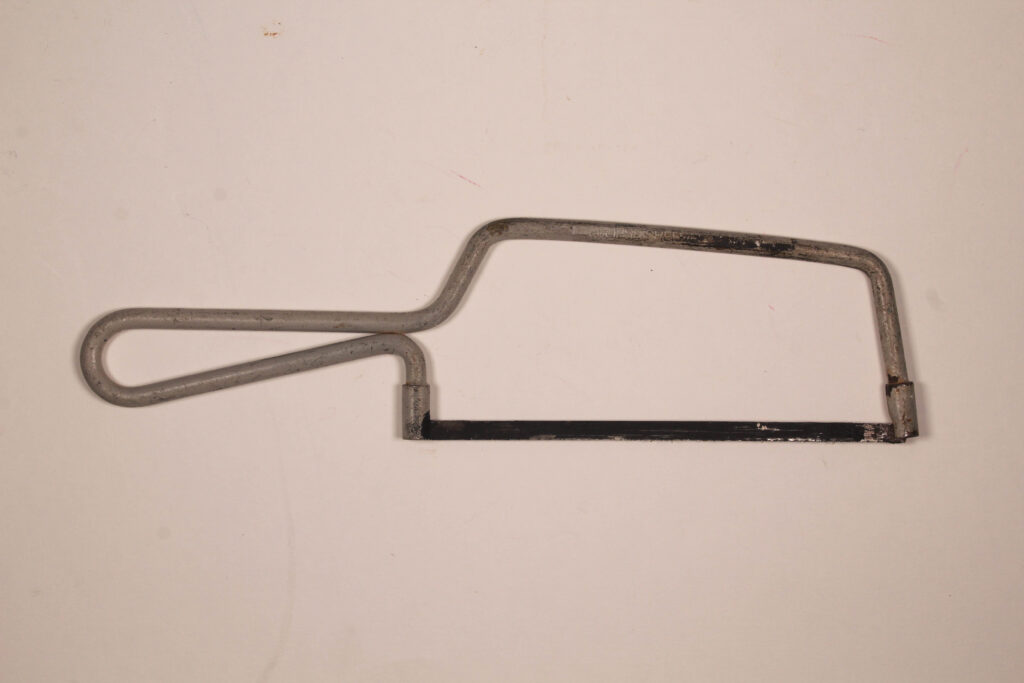
This photo is one of the two out of the selection that is inspired by Walker Evans. It depicts a saw on a flat background. Nothing is happening in the photo, which makes it a perfect example of still life. There is no colour, the saw is only grey and black and the background is just flat white. The texture that appears on the saw gives the photo a rough feeling, but it also shows that this tool has been used a lot. This allows the viewer to question the context, despite there not being any context at all, it is just a saw on a flat background.

This photo depicts a wooden block used to hold scissors. This type of object usually appears in a classroom, which adds an element of nostalgia to the photo. Also, the texture of the wooden block, with the random splodges of paint and wear to the wood adds a worn element to the photo. Unlike the other photos taken with an infinity curve, this photo actually has a lot of colour. Despite this, the object continues to appear very still and solid. Also, the lighting is almost warm, which emphasises the brown colour of the wood and gives the photo a bit of vibrancy compared to the other ones.
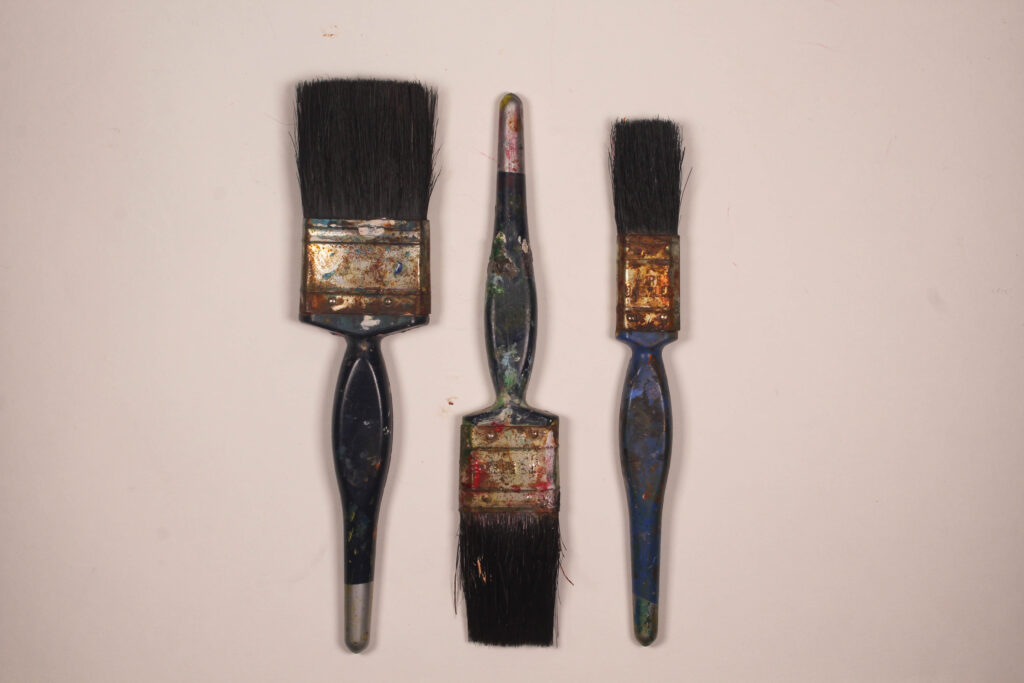
This photo is the other example of a Walker Evans inspired photo. It features three paint brushes on a flat white background. In this case, the shape of the paintbrushes and the pattern that they are arranged give the photo an interesting quality. As well as this, the paintbrushes have clearly been used a lot as there is lots of remnants of dried paint on them. This also adds texture to the photo, as without it the paintbrushes would look new, which is counterintuitive to the still life photos that were taken by Walker Evans, as they tend to feature used tools with obvious marks or dents that clearly show signs of wear.

There are some really strong photos here well done.
Just try to clearly create a post that is directed at still life photography (grouping of objects), and single object photography (after your analysis of Walker Evans).